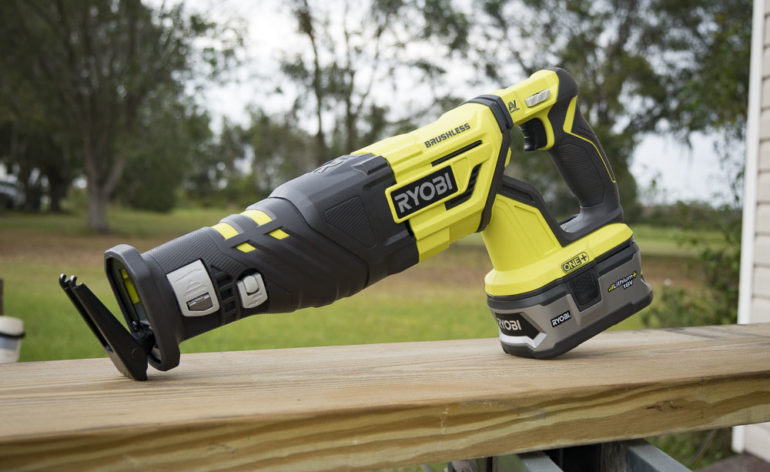
Ryobi Reciprocating Saw P517 Video Review
Ryobi Reciprocating Saw FAQ
Thorough preparation will deliver the most accurate one-pass performance:
1. Get the right blade. Consider the blade material, number, and orientation of teeth. Reverse setting and more teeth per inch usually deliver cleaner cuts in the solid wood.
2. Set the pivoting shoe. If the material you’re working with has surface flaws, adjust the shoe on your Ryobi reciprocating saw accordingly, for example, to have more stability when working.
3. Mark the line. Draw a line with the marker pen or use tape to mark the cut boundaries.
4. Hold the saw firmly positioning it a bit downwards. Distribute the pressure so that you would guide the tool with your body.
5. Press the trigger and make a cut.
The tool utilizes the powerful rotating motor linked through a piston to the long slim blade. Activating the piston movement up and down, the motor lets the blade go fast in an oscillation way, i.e. back and forth, gnawing into the material and making a quick cut through it. The saw usually features a spring hinge, providing for enough safety space between the tool body and the material.
The saw can implement different types of mechanism to transform the motor rotation into the blade motion:
– crank drive;
– captive cam drive;
– swash plate type.
Not going too techie, let’s mention they differ by the geometry of the mechanism and the angle at which its parts are attached. The swash plate drive has the angled orientation reducing the saw body vibration and enabling clean cuts.
The reciprocating saw looks similar to a jigsaw while having more power. It allows working in various conditions:
– Cut equally efficiently through the wood, plaster, nails, tile, and concrete.
– The long thin non-covered blade lets cutting in the tight places and control the cut throughout the process.
– Relatively slender design lets use the saw safely in difficult condition like height works. This kind of saw weighs less than the circular saw while delivering comparable power and enabling do the framing or cut out the overlapping material.
– With the variety of motor types, blades utilized, and stability adjustments, this device doesn’t deliver as smooth cut like a jigsaw blade. It’s mostly used for demolition and jobs requiring a quick and not-too-fine cut.
